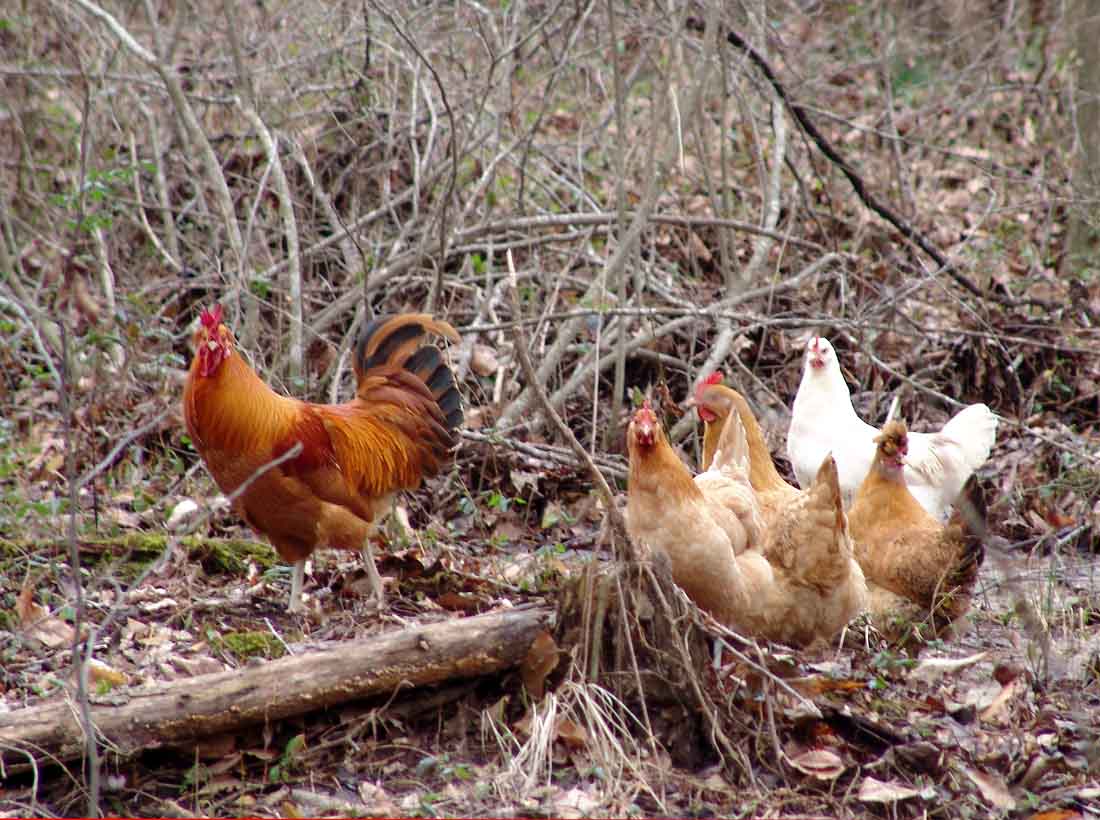
Advertisement
(Homesteading.news) There are lots of good reasons to have free-range chickens on your homestead, but one of the best reasons may be because generally speaking, they stay healthier than factory-farm chickens.
Remember last year’s bird flu outbreak, when thousands of chickens were affected? Free-range chickens weren’t. The outbreak that devastated the U.S. poultry and egg industries seemed to leave backyard chicken farms mostly untouched in what experts are calling an epidemiological mystery.
Bird flu is a highly lethal strain of influenza that can kill a bird or human within days. Fortunately, the disease is not transmitted very easily, and it only tends to infect human beings who work in close contact with birds. However, epidemiologists fear that the flu could be only a mutation or two away from a strain that spreads easily from person to person.
When birds are kept in close quarters, as in factory-farm operations, the disease can run wild. For this reason, the standard practice among poultry operators has been to kill an entire flock at the first sign of infection.
Last spring’s North American outbreak was the biggest in history, and it led the poultry industry to kill more than 40 million birds in Canada and 16 U.S. states.
Conventional wisdom overturned
According to data from the U.S. Department of Agriculture (USDA), as of May 14, 2015, only about 10 percent of confirmed bird flu cases have come from backyard operations.
That was true even though the official response to any confirmed case is to search the surrounding area for birds (including people’s homes) and then quarantine and test any birds found, including those in backyard flocks.

In Iowa, for example, all flocks within 6.2 miles of an outbreak are tested. Of the more than 400 flocks tested , more than half have been backyard operations. Yet the trend continues: it’s the factory-farmed birds getting sick.
This has been described as a mystery because the conventional wisdom holds that bird flu is spread via bird droppings — specifically, droppings left by wild, migratory birds. This means that backyard farms should be more susceptible because the birds spend more time outside, often frequenting the same ponds used by wild birds, and biosafety protocols are substantially less rigorous than those used at factory farms. Some of the explanations proposed for the spread of bird flu into the commercial farms — such as that bird droppings and feathers are being blown in by ventilation systems — fail to explain this paradox.
Another explanation offered in the early days of the outbreak — breaches of biosafety measures by factory farm workers — seems to have been disproven in recent weeks. Once the scale of the epidemic became clear, commercial farms doubled down and strengthened their safety protocols. Despite these measures, the spread of the epidemic has not slowed, and it still remains mostly confined to factory farms.
“All the old dogma about high-path influenza transmission has just gone out the window,” said infectious disease researcher Michael Osterholm of the University of Minnesota. “We’re in totally uncharted territory.”
Healthier environment, healthier birds
It seems likely that it is some characteristic of factory farms themselves that is causing those birds to be susceptible to avian flu. This could be anything from the close conditions that make disease spread easily to compromised health and immune systems among factory farmed birds, perhaps paradoxically caused by the constant barrage of antibiotics they are exposed to.
Another explanation offered by some researchers is that even if backyard chickens are exposed to the virus more because they spend more time outside, the outdoors itself provides them with protection. That’s because sunlight and warm temperatures are lethal to the influenza virus.
Just another great reason to have your own free-range flock.
By David Gutierrez, Natural News.
More:
- Raising Chickens: Egging On The Farm-To-Table Movement
- Are Your Chickens Flying Their Coop? Here’s How To Clip Their Wings And Keep ‘Em Around
- Why Your Organically-Raised Chickens Are MUCH Better For You Than The Store-Bought Brands
Homesteading.news is part of the USA Features Media network. Get caught up on ALL of the day’s most important news and information here.
Submit a correction >>
Advertisement
Advertisements
















